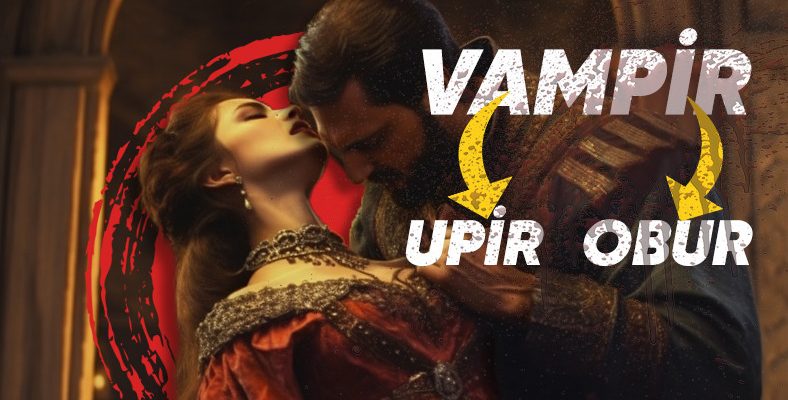From Twilight to Dracula, from The Vampire Diaries to Blade… Vampires, which have inspired countless movies and games, come from Turkish mythology, even though they are thought to belong to Western culture.
Creating a new fashion trend with its cool clothes, escaping the daylight and going hunting only at night, nourished by sucking blood; Vampires, the foundation of gothic literature, the favorite of cinema…
After all, the imagination of humanity is not a modern day thing. Even in question supernatural concepts When it comes to creating, we can say that our ancestors did much better than us. Vampire stories are only a small part of the rich myths that have terrified people for generations.
Not vampire, “upir”!
No matter how far from reality, folk beliefs that take their source from the culture of the people and the geography they live in; existing in people’s lives at the time real seen as a concept.
Both those who listen and those who tell accept them as truth. Most of these beliefs today even though it has lost its credibility We cannot deny that there is a mass that continues to believe in its existence.
One of these beliefs is a part of the daily life of the Old Kazan Turks (Tatars). ups. Evliya Çelebi mentions that this word, which has evolved into the word “vampire” today, is a Turkic word originating from Tatar lands. So actually ups in a word ubers, It forms the basis of today’s vampire phenomenon.
Where does the name “Ubir” come from?
The word vampire originates from Old Turkic. “to kiss” comes from the verb. The old Turkish meaning of this word, which has become “to kiss” with its vowel changes, means “swallow, suck, absorb”. So it’s a pretty reasonable name for upirs who suck blood to survive. Chuvash Turks beat this creature, Uzbeks upir, Ottoman Slavs upir, Tatars uber said.
Ubir later became a glutton. The most important feature of gluttons is that they are always hungry and they are not satisfied with whatever they eat/drink. For this reason, these creatures must have been called gluttons. Even Tatar people “Ubir does not get enough, even if he is full” There is even a saying.
Imagination is not a modern day thing.
Evliya Çelebi, the traveler who wandered every inch of the 17th century and helped us get an idea about the beliefs, cultures and foods of the period in different regions, in the Travel Book It is an important source where upir is mentioned.
The story of upir, which Çelebi claims to have witnessed himself, told in the Seyahatname Circassian belonging to the people. According to Çelebi’s writings, although the people of Circassia in Eastern Europe started to recognize Islam in the 1600s, they have a heterodox belief since the influence of paganism continued in their lives, and they are a community where problems are experienced especially in burying the dead.
Circassia’s gluttons only appear at night and by sucking human blood they survive, their corpses are red because they suck blood. There are also hunters among the people of these creatures, which took place in the daily life of the people of the period.
Çelebi said that if the soil is slightly split in a grave, it is thought that there is a glutton in that soil. since the grave was dug Talking about. As we know from vampire movies, gluttons, who are not harmed by sword blows or other physical blows like humans, can be killed by hunters by being pulled from their graves and only beheaded, staked or burned.
The concept of vampire is heard for the first time in Western literature with a poem written by a Western writer. In the following times, with the increase of Ottoman and European interactions, “upir” The word also spreads to Europe. Thus, vampire stories spread by word of mouth and form the basis of fictions that have survived to the present day.
RELATED NEWS
Van Helsing’s Ottoman Version: The “Vampire” Incident That Scared and Kidnapped People in a Village in the Balkans
RELATED NEWS
From Vampire Funerals to Brain Eaten Skulls… 10 Terrifying Archaeological Discoveries
RELATED NEWS
12 Immersive TV Series Featuring Vampires, One of the Most Fantastic Characters of the Cinema World
RELATED NEWS
15 Turkish Mythology Characters, Most of which We Still Carry Their Names
RELATED NEWS
From Wolf to Dragon, From Red to White: What Do Animals and Colors Mean in Turkish Mythology?
RELATED NEWS
20 Scary Creatures in Turkish Mythology: If We See These in Movies, It Would Not Sleep At Night
RELATED NEWS
10 Works of Bartu Bölükbaşı, Inspired by Turkish Mythology, Inspired by Impressive Drawings
RELATED NEWS
The Goddess Believed to Protect Babies in the Womb in Turkish Mythology: Umay Ana
RELATED NEWS
